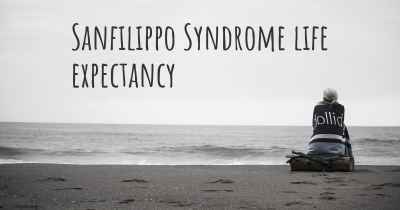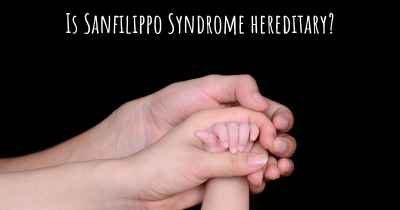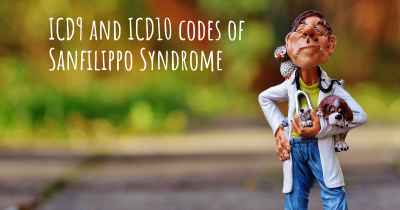Sanfilippo Syndrome diet. Is there a diet which improves the quality of life of people with Sanfilippo Syndrome?
Are you aware of a diet that can improve the quality of life of people with Sanfilippo Syndrome? Is there a diet that is suggested to avoid when having Sanfilippo Syndrome? See if there is a diet that can improve the quality of life of people with Sanfilippo Syndrome, recommended and to avoid food when having Sanfilippo Syndrome

Sanfilippo Syndrome Diet: Improving Quality of Life
Sanfilippo Syndrome, also known as mucopolysaccharidosis type III (MPS III), is a rare genetic disorder that affects the body's ability to break down certain sugars. This leads to the accumulation of harmful substances in the body, causing progressive damage to various organs and tissues. While there is currently no cure for Sanfilippo Syndrome, managing the condition through a well-planned diet can help improve the quality of life for individuals with this condition.
The Role of Diet in Sanfilippo Syndrome
Although diet alone cannot reverse or halt the progression of Sanfilippo Syndrome, it plays a crucial role in supporting overall health and well-being. A carefully designed diet can help manage symptoms, reduce complications, and optimize nutrition for individuals with this condition.
Key Considerations for a Sanfilippo Syndrome Diet
When planning a diet for someone with Sanfilippo Syndrome, several factors need to be taken into account:
- Reducing Sugar Intake: Since Sanfilippo Syndrome affects the body's ability to break down certain sugars, it is important to limit the consumption of foods high in these sugars. This includes avoiding or minimizing the intake of table sugar, high-fructose corn syrup, and foods with added sugars.
- Emphasizing Complex Carbohydrates: Complex carbohydrates, such as whole grains, legumes, and vegetables, should form the basis of the diet. These foods provide essential nutrients, fiber, and energy without contributing to the sugar overload.
- Ensuring Adequate Protein: Protein is essential for growth, repair, and overall health. Including lean sources of protein, such as poultry, fish, tofu, and legumes, can help meet the body's needs. However, it is important to consult with a healthcare professional or registered dietitian to determine the appropriate protein intake for each individual.
- Optimizing Nutrient Intake: Sanfilippo Syndrome can lead to nutrient deficiencies due to impaired digestion and absorption. Therefore, it is important to focus on nutrient-dense foods, including fruits, vegetables, whole grains, lean proteins, and healthy fats. A dietitian can help identify specific nutrient needs and recommend appropriate supplements if necessary.
- Managing Gastrointestinal Symptoms: Many individuals with Sanfilippo Syndrome experience gastrointestinal issues, such as constipation or diarrhea. Adequate fluid intake, fiber-rich foods, and regular meals can help regulate bowel movements and improve digestive health.
- Individualized Approach: Each person with Sanfilippo Syndrome is unique, and their dietary needs may vary. It is crucial to work closely with a healthcare professional or registered dietitian to develop an individualized diet plan that considers specific symptoms, preferences, and nutritional requirements.
Collaboration with Healthcare Professionals
Managing Sanfilippo Syndrome requires a multidisciplinary approach, and diet is just one aspect of comprehensive care. It is essential to collaborate with healthcare professionals, including geneticists, pediatricians, neurologists, and dietitians, to ensure the best possible outcomes.
A registered dietitian with expertise in metabolic disorders can provide personalized guidance and support. They can assess nutritional status, monitor growth and development, and make appropriate dietary recommendations based on individual needs. Regular follow-ups and adjustments to the diet plan may be necessary as the condition progresses.
Conclusion
While there is no specific diet that can cure Sanfilippo Syndrome, a well-planned diet can significantly improve the quality of life for individuals with this condition. By reducing sugar intake, emphasizing complex carbohydrates, ensuring adequate protein, optimizing nutrient intake, managing gastrointestinal symptoms, and taking an individualized approach, individuals with Sanfilippo Syndrome can better manage their symptoms and support their overall health and well-being.
It is important to consult with healthcare professionals and registered dietitians who specialize in metabolic disorders to develop a personalized diet plan that meets the unique needs of each individual with Sanfilippo Syndrome.
Posted Nov 6, 2019 by TSF Inc Team Sanfilippo Foundation
Posted Jan 1, 2018 by Danielle 3160
Carbs and the least additives and chemicals added are healthier overall
Posted Feb 25, 2019 by Patty Jesse 3000
Posted Nov 3, 2019 by Anne-marie 2500








